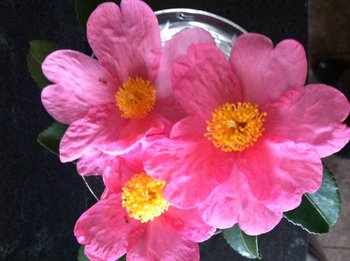
It's about the language of flowers, an international, timeless language that applies to every season and country, such as - as Kirkby informs - May Day in France, which focuses on the lily of the valley. A lot of folks in the U.S. regard this delicate, fragrant ground cover as a nuisance - try getting rid of it! But in France, it's often called porte-bonheur, literally "bringer of happiness." Bouquets are sold everywhere to welcome spring.
Cherry blossoms in Japan represent the essence of life itself. As Kirkby describes it, "shockingly lbeautiful and heartbreakingly fleeting."
The camelia, she notes, is "the empress of winter," bringing lightness and gaiety to a dark time of year. It's named for Georg Kamel, a Jesuit missionary and botanist, who brought this beloved flower to Europe from east Asia in the early 1700s. It was grown in hothouses and by the mid-19th century, was considered an exotic must-have.
"It was the belle of winter flowers, gracing dinner parties, balls and concert rooms," Kirby writes, and soon came to represent "a simple expression of feminine beauty and love."
All that conversation, and beauty, in my back yard.
No comments:
Post a Comment